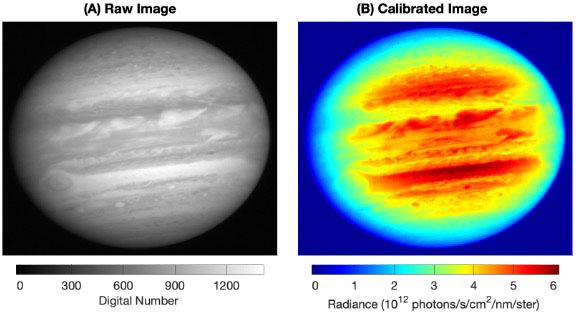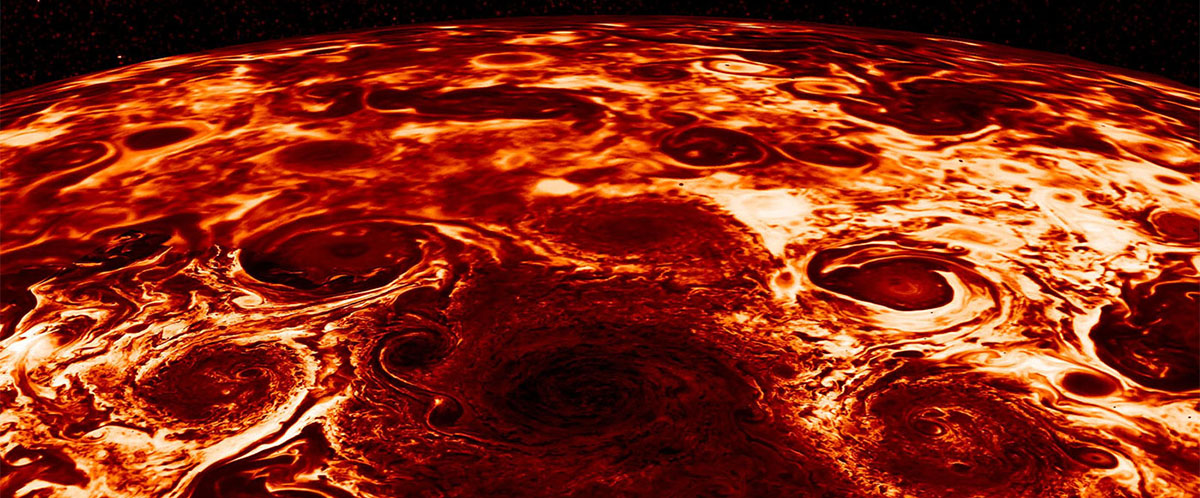Credit: NASA/JPL-Caltech/SwRI/ASI/INAF/JIRAM
NASA has selected a University of Houston research proposal to explore how Jupiter absorbs sunlight and releases heat. The three-year project will be led by Dr. Liming Li, professor of physics with the University of Houston’s College of Natural Sciences and Mathematics. Li was awarded nearly $700,000 through NASA’s New Frontiers Data Analysis Program (NFDAP).

The project titled “Jupiter’s Radiant Energy Budget: Full-Disk Temporal Variations and Polar Region Analysis,” investigates how Jupiter manages its energy, the amount of sunlight it takes in, and how much heat is emitted back into space. This balance is known as the radiant energy budget (REB), which determines a planet’s temperature, weather, and climate.
Unraveling Jupiter’s Energy Balance
Dr. Li’s team will examine how Jupiter’s energy balance changes with time and location by using long-term observations from five major NASA missions and observatories (Juno, Cassini, New Horizons, the Hubble Space Telescope (HST), and the James Webb Space Telescope (JWST)). Because Jupiter’s orbit and seasons are much longer than Earth’s, detecting its seasonal and year-to-year changes requires combining data collected over decades. This marks the first continuous record long enough to study Jupiter’s global energy balance across seasonal and interannual timescales.

Juno’s unique polar orbits make it possible to directly measure Jupiter’s polar energy balance directly, shedding light on the giant vortex clusters that encircle each pole. “By measuring how sunlight and heat flow through these regions, we can better understand what powers and stabilizes these systems,” said Li.
Jupiter’s dynamic and complex atmospheric system makes it an ideal natural laboratory for studying planetary weather and climate. “For Earth, the incoming and outgoing energy are nearly balanced,” Li explained. “But for Jupiter, they’re not, meaning an additional energy source, that is internal heat, helps drive its atmosphere.”
While the research focuses on Jupiter, its insights extend to Earth’s climate. The same physical laws that govern Jupiter’s energy flow also apply here. A small imbalance of less than 1% in Earth’s REB can drive global warming. By studying how similar imbalances shape Jupiter’s weather and climate, scientists can improve models of how energy affects large-scale circulation, storms, and long-term climate patterns.
Out of 32 proposals submitted nationwide, NASA selected only eight for funding under the 2024 NFDAP cycle. The project will also support NASA’s future missions to the giant planets by providing a clearer picture and testable theories of the REBs and internal heat of these planets in our solar system.
“By studying how Jupiter’s atmosphere balances sunlight and heat, we’re not only learning about the giant planet — we’re also gaining new perspective on how energy drives weather and climate across the solar system,”
– Dr. Liming Li, University of Houston
